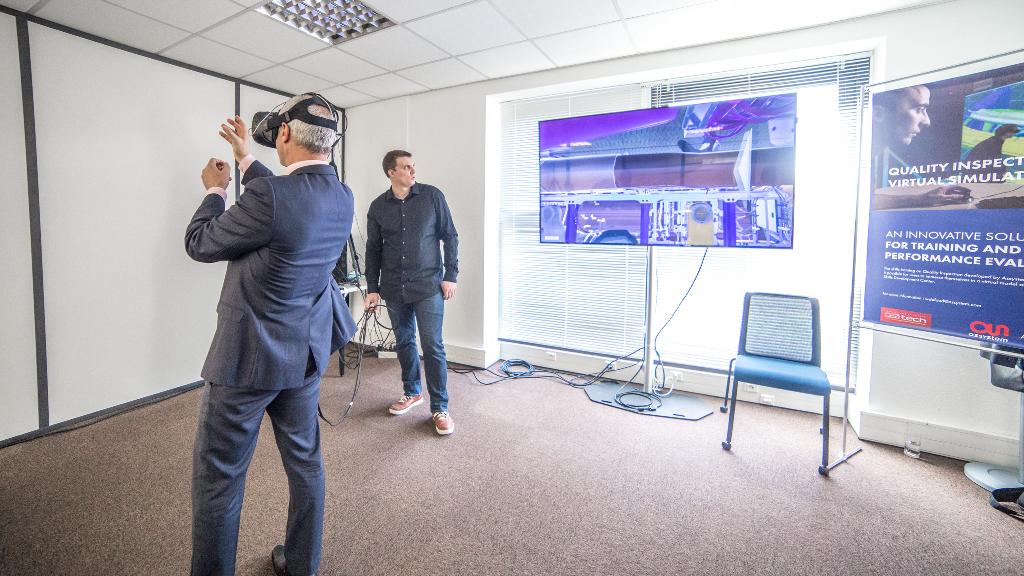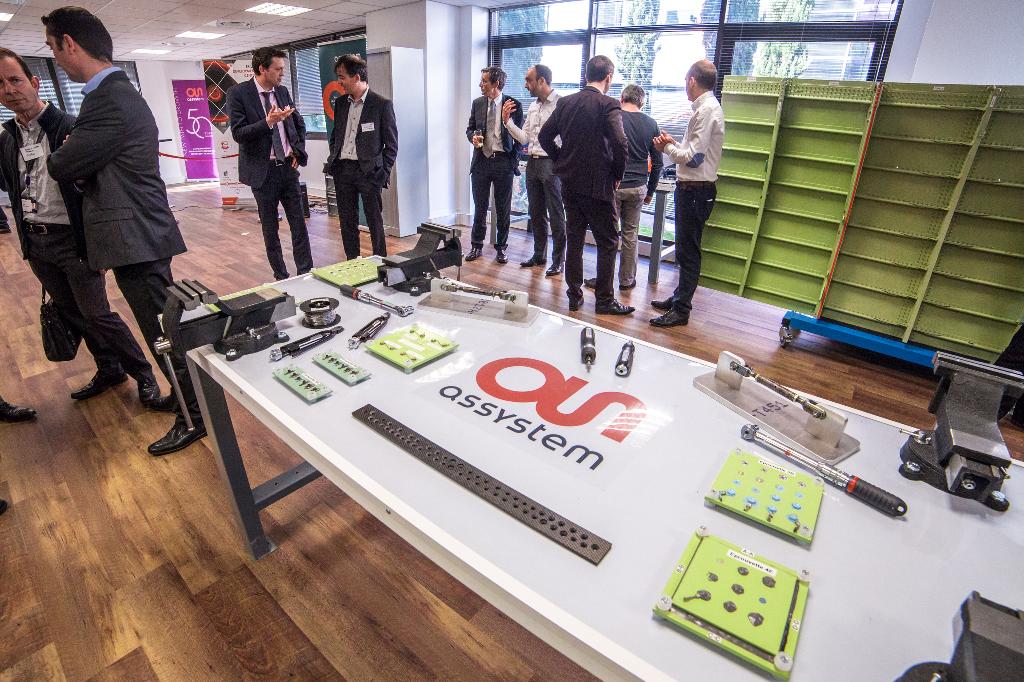Tomorrow’s world

Mike Richardson takes a closer look at Assystem’s ‘Factory of the Future’ 3D simulation demonstrator to see with his own eyes, what the future holds for tomorrow’s aerospace production facilities.
In a rapidly changing aerospace sector, the digitisation of industry and of factories can result in major disruption, when sketching the outlines of the industry and Factory of the Future. Technology enables greater agility and flexibility, and increased intelligence. They are opening the way towards mass-customisation, which is a sizeable challenge for the industry of the future.
The Factory of the Future involves the successful integration of technology into the customer’s business line. This integration enables genuine gains in productivity, competitiveness and performance, and shapes new business models.
Assystem is an international group specialising in engineering. As a key participant in the industry for 50 years, the company supports its clients in developing their products and managing their capital expenditure throughout the product lifecycle.
“We have established a 750m2 Skills Development Centre (SDC) in Toulouse to develop a new way of delivering training for aerospace,” begins the company’s business development & commercial director, Philippe Eyssautier. “We have 250 training programmes in the SDC, and we expect to train 700-800 people per year at around 10 people per session.
“The SDC trains our own staff and our customers’ staff as well as individuals looking to develop careers in the aerospace sector. When we think about what the industry of the future will look like, it’s easy to assume that it will mean building brand-new factories from scratch, but this won’t always be the case. Some modern factories are already established so one of Assystem’s key issues is how to integrate and modify an existing factory and give them a glimpse of the future.”

The future now
Whilst Eyssautier concedes that some people may be a little sceptical about the Factory of the Future concept, he points to Assystem’s 3D Factory of the Future demonstrator model and how it is able to show customers exactly how the company’s philosophy will work and all the tangible benefits involved.
During the last Paris Airshow, Assystem announced a Factory of the Future partnership with energy management and automation specialist, Schneider Electric to combine their expertise, support the transition of large industrial groups towards the industry of the future, and create genuine value creation in terms of competitiveness and performance via the contribution of customised ‘Factory of the Future’ solutions.
“To introduce a Factory of the Future solution, we have to take the best technology and overcome the key issue of how to integrate it into the customer’s facility,” he continues. “We decided that to deploy a solution, we need to work with a technology leader. Schneider already offers strong solutions for the Factory of the Future and they are working with us using their manufacturing execution systems (MES).
“It is important for them to have a system integrator like Assystem to provide a global solution. Assystem and Schneider are technology leaders on a global scale. Today’s global aerospace customers are looking for help from big players that are able to define a proven concept with benefits, and if it works, deploy it on a global scale. This is our objective with Schneider Electric – to really define a pragmatic solution for industry and deliver it to the market.”
Another dimension
Although Assystem’s Factory of the Future demonstrator works in 3D, you could also say that it provides the opportunity to work in the fourth dimension of time too. The company’s simulations enable customers to measure the time taken to perform a production process and assess the logistical end-to-end effects of moving components around a Factory of the Future.
There’s also the concern in the aerospace industry that an aging workforce will eventually retire with a lot of valuable knowledge and experience still locked inside their heads. What is the succession plan come the following Monday morning when production restarts with a new and possibly inexperienced employee at the helm of a very technical engineering production process?
“There’s a lot written about smart factories and digitisation, so to share actual working examples is, in our opinion, the way to go forward,” states Darren Preen, Assystem UK’s head of manufacturing engineering, aerospace. “With some of our tools, you can capture a lot of information and technology using wearable video glasses and record every production activity by videoing employees doing their job. Some production skills are hard to transfer and formalise on paper - it’s not something you can easily write down, for example. We can use video techniques so that the employees know exactly how the process should be performed.”

Joined-up thinking
Applying a little bit of joined-up thinking, an aerospace OEM could use Assystem’s Factory of the Future concept to not only enhance its in-house production processes, but also those of its incumbent supply chain too. So, would everyone in the supply chain need to be onboard to access and connect to a holistic manufacturing execution system similar to what Assystem and its partner, Schneider Electric can provide?
“We have to look at the entire end-to-end supply chain, the factories and the kinds of products and ensure that everything is connected – it has been specifically designed with the supply chain in mind,” Eyssautier explains. “The aerospace sector operates strict quality guidelines and is heavily regulated. Any nonconformities need to be identified, so to integrate these procedures into the supply chain, we use a process called ‘reverse logistics’. This means integrating into the supply chain the capability of any supplier to take efficient care of any identified nonconformity. Smart factories need smart supply chains.
“We’ve already developed and deployed our 3D Factory of the Future demonstrator in partnership with the biggest aerospace OEM in Europe and they are using our analytics and algorithms to define within their supply chain some of our latest developments.
“We take our customers’ existing ERP/MRP production data in the manufacturing engineering system and introduce our own software algorithms. We can also introduce some Lean manufacturing benefits into the supply chain too.”
He concludes: “We strongly believe that human interaction must be at the very centre of the Factory of the Future, so we’ve tried to use our model of the factory to demonstrate not only the types of projects and work that we’ve done, but what could be possible for our customers in the not too distant future.”












